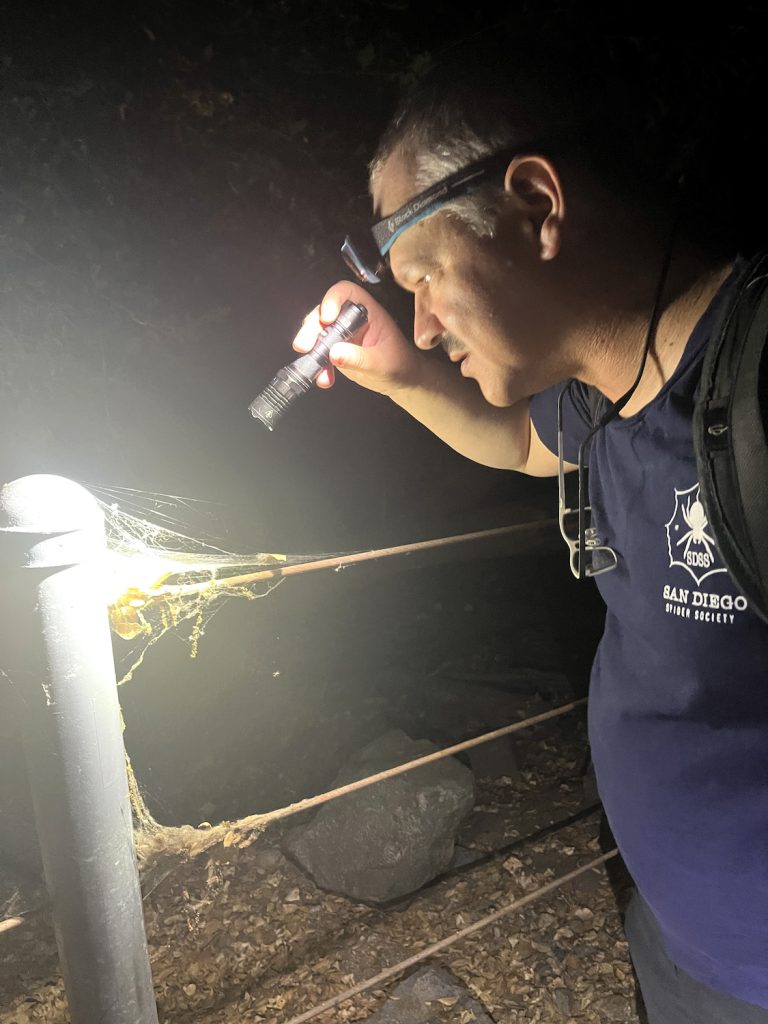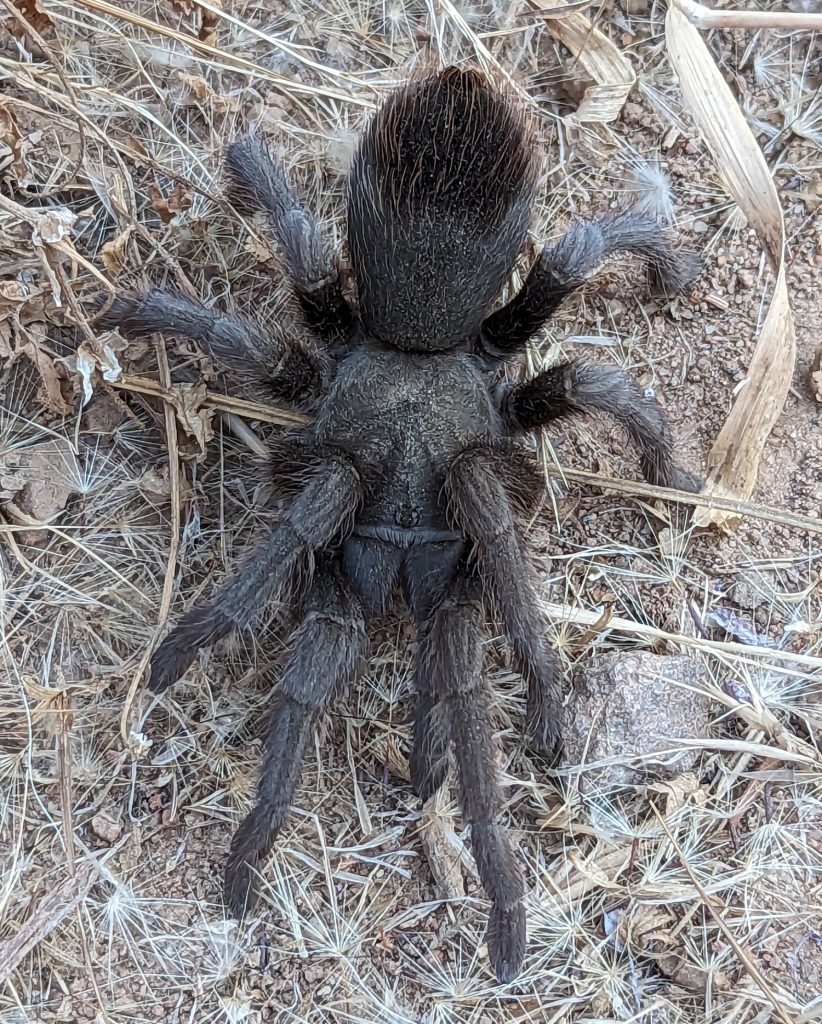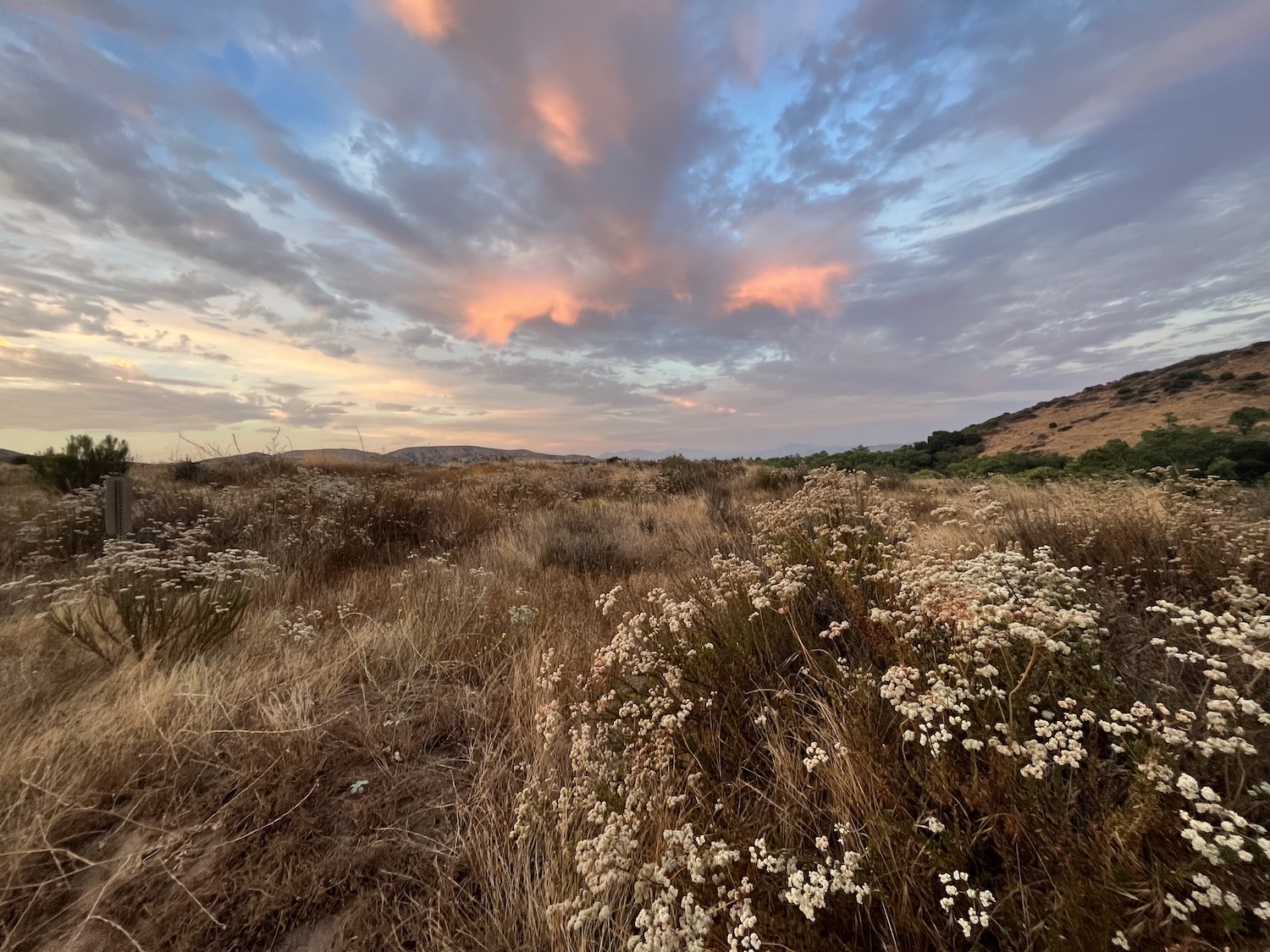It is sunset when I meet up with Randy Supczak at the Grassland Loop in Mission Trails. We are here in hopes of spotting a wandering tarantula. The males, once they mature, leave their burrow in search of a female. They will die on this hike to proliferate their kind. If we are lucky, we’ll see one on its pinnacle journey.
Four years ago, Supczak wouldn’t have done something like this—he had no particular affinity for bugs—but that changed when he bumped into a noble false widow in his backyard and got curious. He fell down a research rabbit hole and suddenly became spider-thirsty.
The obsession made him into a bomb of arachnid information, and everyone around him was getting hit by the shrapnel. “Every time I came up to my husband,” Supczak recalls, “he’d just start rolling his eyes.”
The apathy of his friends and family didn’t make sense to him. Who wouldn’t want to know that female green lynx spiders can spit venom?

Randy Supczak gets a closer look at some spiders on the trail
“I had to find another way to share this passion I’d developed,” he says. In other words, he needed to save his relationship—so he founded The San Diego Spider Society, a Facebook group with 2,000-plus members who share a mutual appreciation for spider facts. Members can ask the group for help with identification. Often, on weekends, Supczak leads free nighttime spider walks, which I’ve joined this week.
Dark begins to fall and we keep our eyes on the sides of the trail. We are looking for tiny, hairy legs sticking out of old rodent burrows or for peripheral movements in the grass. Two different kinds of tarantulas call this part of San Diego home: the Steindachner’s ebony tarantula and the California ebony tarantula. The wandering season is July to August for the former and September to November for the latter. Supczak reminds me that though tarantulas look scary, they have much more to fear from humans than we do from them. Their abdomens are fragile and can fatally rupture—Humpty-Dumpty-style—from a drop as low as one foot.

At dusk, the Grassland Loop in Mission Trails is an ideal place to spy on spiders
We walk the curved dirt trail. “There was a trap-door spider here last week,” Supczak says, trying to tap the right spot on a dirt mound to get the clever arachnid to reveal its home’s hinged opening.
After an hour, we’re still yet to see any spiders looking for a coupling. The males, he explains, spin a sperm web before setting out. (“It’s exactly like it sounds,” he adds.) They deposit their sperm into this special web, suck it up into their two front appendages called pedipalps (when the appendages are full and bulbous, spider people sometimes refer to them as “boxing gloves”), and go on their way, fueled for baby-making. The mating sounds less than ideal—the tarantula will try to maneuver his palps over the female’s genitalia while trying not to become her post-coital snack.
Stink beetles cross our path. A black widow perches between boulders, and wolf-spider eyes reflect off our flashlights like shattered glass. We are less than a mile from the 52 highway, but it feels like we could be on the Oregon Trail.
The last time he came out here, Supczak tells me, he saw a tarantula hawk—a type of parasitic wasp—attack a tarantula. It paralyzes the spider with its sting, drags the tarantula into an empty burrow, and lays its egg on top of it. When the wasp larva hatches, it devours the spider from the inside, avoiding all essential organs to keep it alive so it can feed for longer. As the arachnid dies, the wasp larva pupates. I look out at the brown grass and gorgeous purple sky and marvel at what a horror show nature can be.
I want to murder tarantula wasps, but Supczak explains that nature is complex: I’d be killing one of the top pollinators of milkweed, which keeps our monarch population alive.
After two-and-a-half hours—and a great time, despite no tarantula sightings—we make it back to our cars. Before driving off, I ask Supczak if there is anything about spiders he wishes more people knew.
PARTNER CONTENT
“If we woke up tomorrow and everything was exactly the same,” he says, “except some person got their wish and all the spiders were gone, crops would begin failing within weeks because insect populations would explode. We’d have famines. Starvation. It’d be an ecological disaster.”
I think about that for a minute. It’s not the big, thick arachnid in your bedroom that is the nightmare. The real nightmare, it turns out, is if there were no spiders at all.



















